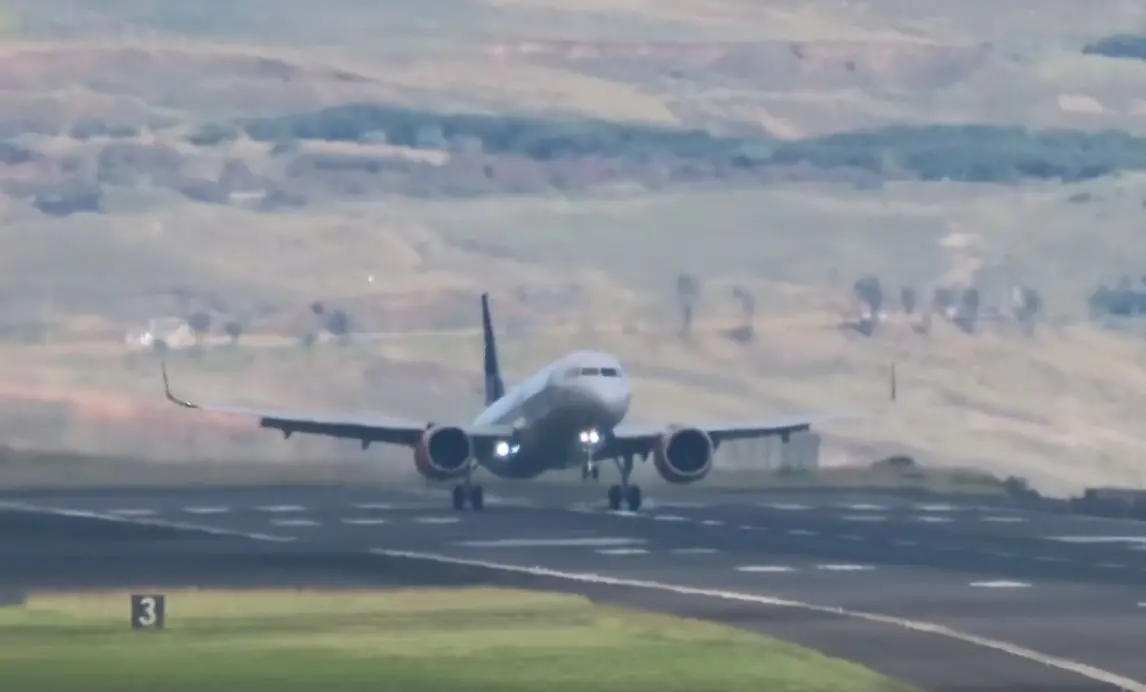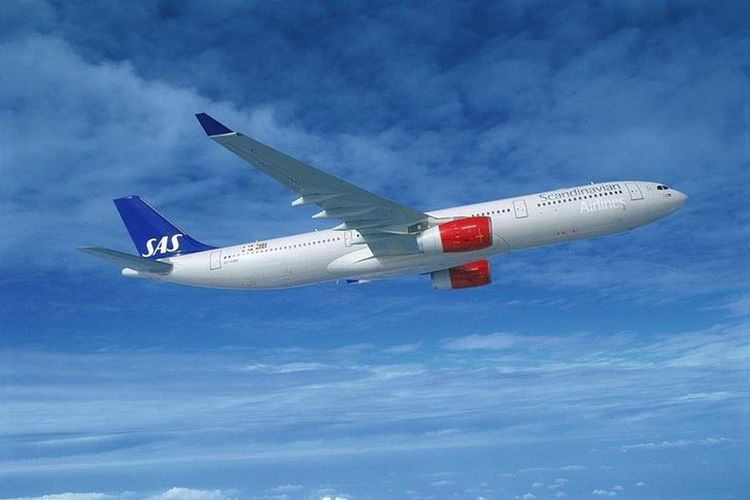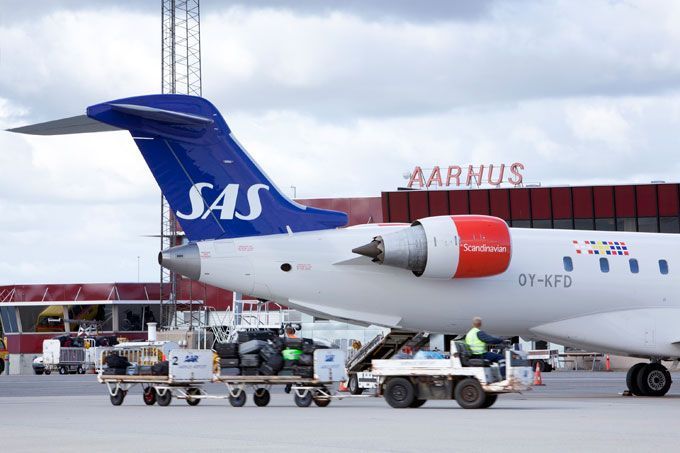Chilling footage has surfaced, capturing the harrowing instance when a passenger jet, with 90 people on board, violently struck a runway in Portugal.
This alarming incident was precipitated by intense winds that momentarily led to an engine failure. Scandinavian Airlines (SAS) flight SK2901, which had departed from Stockholm on January 6 for Funchal in Madeira, faced a perilous situation as it approached its destination. A strong downdraft, a sudden and powerful downward air current, forced the plane into a precarious descent, culminating in a dramatic and hard landing on the tarmac.
As the plane was coming in to land, it encountered a strong downdraft, a sudden change in wind pattern that forced the aircraft down onto the tarmac with alarming intensity. The Airbus A320, known for its robust design, was not spared the fury of nature as it bounced off the runway. This bounce was not just a mere touch-and-go; it was accompanied by sparks flying and the landing gear absorbing incredible forces. In a brief but heart-stopping moment, flames were seen erupting from the left engine, adding to the already heightened sense of emergency.
The aircraft, momentarily losing its battle with gravity, jerked back up into the air. The pilot, faced with the critical task of controlling the distressed aircraft, found it challenging to bleed enough speed for a safe landing. This led to a tense period where the aircraft had to be maneuvered back under control. According to the Aviation Herald, the pilot was instructed to hold for 20 minutes before making another landing attempt. However, during this time, it was noticed that the left-hand engine was emitting fumes, raising concerns about its safety.
In a decisive move prioritizing passenger safety and aircraft integrity, the SAS pilot opted to divert the flight to Las Palmas airport on the Canary Islands. This airport was chosen for its better-equipped facilities to perform necessary engine maintenance and safety checks, crucial under the circumstances.
Despite the harrowing ordeal, the flight ultimately made a safe landing at Las Palmas airport. Remarkably, all 90 passengers disembarked without injury, a testament to the skill and professionalism of the flight crew under extreme pressure.
This incident is a stark reminder of the unpredictable nature of air travel, where high winds can significantly impact a plane’s behavior during critical phases like landing. The Airbus A320’s encounter with the sharp downdraft, causing it to forcefully hit the tarmac, underscores the challenges pilots may face in adverse weather conditions.
The successful emergency landing at Las Palmas airport not only averted a potential disaster but also highlighted the importance of quick thinking and expert handling in aviation. The incident, while terrifying, serves as an example of the resilience and preparedness inherent in modern air travel.
The scary incident unfolded just one day after an Alaska Airlines flight suffered an inflight blowout at 16,000ft which tore open the cabin door. The incident has led to the grounding of Boeing 737 Max 9 aircraft across the United States and globally.
As the aviation industry continues to prioritize safety, incidents like these provide valuable insights into emergency response strategies and the importance of continuous training for flight crews. These recent incidents will undoubtedly contribute to further enhancing safety protocols and procedures in the industry.













